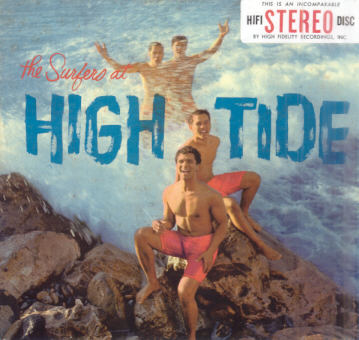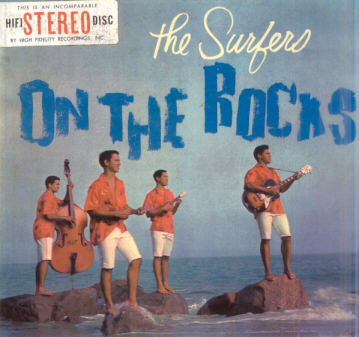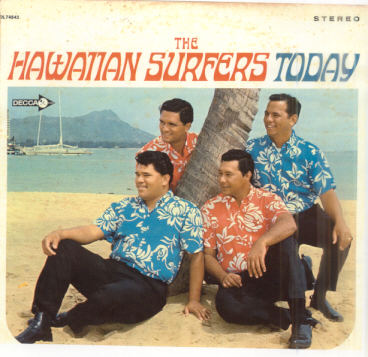“the Surfers to Aikido – Clayton Naluai”
–as told by JIMMY TOYAMA
It was that kind of Waikiki Beach post card evening, soft winds caressing swaying palms as the red-orange setting sun bounced its rays on Sans Souci Beach waters. But the warm air sounded strange… there were no laughter of the small children playing in the sand; no dulled thuds of wandering beach balls aimlessly searching for lapping waves. Instead, I heard a song, familiar in days of my youth; in days yearning to come home for summer and the surf. Softly in the playground of my memories, he sang…
“I seem to hear the Pali calling me;
I seem to hear the surf at Waikiki;
And from Pacific Heights, I seem to see the lights;
Of a City that is very dear to me…”
The unforgettable music of the Surfers. Memories suddenly surfaced, and meandered – searching, like that bouncing beach ball…
THE BEGININGS
Its 1955. Clayton Naluai graduates from Hawaiian Mission Academy.
Three days after graduation, Clayton was onboard a prop-driven Pan American Globe Trotter aircraft headed to the Mainland. His final destination – Berrian Springs, Michigan, and Andrews University – to pursue a pre-med education. Eventually, he planned to attend medical school, and become a practicing physician.
His goals seemed set as he was committed to a life in medicine and service. But, as it frequently happens in life-planning, the best laid path often crosses, like a rail-line, a switching point; and, suddenly, one is headed in a new direction, totally unaware of serendipitous occurrences to be experienced along the way which would create unexpected twists and turns of fate.
Leaving Andrews University and Michigan was Clayton’s switching point. The new direction was a fateful move to Southern California to attend Glendale Junior College, and where he was joined by his younger brother Alan.
In Hawaii, Clayton and Alan grew up as part of a musical family, so the idea of becoming members of the Glendale Junior College Choir in their first year together seemed like a natural attraction and magnet for both of them. Again, fate seemed to intervene. In the choir group, they met two other Hawaii natives— Bernie Ching and Pat Sylva, who would eventually become their life long musical partners.
It seemed like a another serendipitous moment when the school’s Choir Director suggested that Clayton, Alan, Bernie, and Pat organize themselves and perform specialty music within the Choir’s public concerts. Soon after, they began performing Hawaiian music in the choir’s concerts up and down the West Coast. An outgrowth of their specialty performances in the Choir’s concerts came requests for them to play at small parties like backyard Luaus – plentiful in those days when Southern Californians had a love affair for ‘people and things Hawaiian’. These weren’t paid gigs, but the young entertainers could eat all they wanted, ‘Hawaiian style’!!
THE EARLY YEARS
The four talented musicians produced great sounds and great music. Soon word got around about their earthy talent and pleasant performing personalities. Almost overnight those “backyard gigs” started to grow exponentially.
One day, another life-altering moment occurred…
“A friend who was doing audio sales queried the trio as to the possibility for them to record 10 songs as a sound-demo track for specialty audio equipment he was selling. Eager to help a friend from Hawaii, they agreed. The result? When potential customers buying electronics entered the store, they immediately experienced the ‘melodic voices’ of the group streaming out of the ‘now-on sale’ two-channel stereo systems,” Toyama related.
And he continued… “Then one day another unforeseen event occurred. Would you believe, an executive for Hi Fi Records walked into the store looking for stereo equipment and caught the group’s music on the overhead? He found himself immediately attracted to and interested in the music he was hearing,” Toyama said. “And not long after, he had the group in his office signing a contract to record an album. The recording sessions were completed soon after; however, the group had not registered a professional name for, now, their planned album designed for sales and marketing.”
So, get this Toyama continued with a smile…“One day, the young daughter of the secretary at Hi Fi Records upon hearing Clay and the boys’ Hawaiian track, suggested the group call themselves– ‘the Surfers.’”
“Clayton and the guys’ reaction was typically local: WHY NOT!”
Hawaii’s soon-famous performing group’s public identity thus was born – along with their first album, “the Surfers On The Rocks”.
Several albums followed. And one day, the assistant to Richard Vaughn, founder of Hi Fi Records, proposed that ‘the Surfers’ venture into professional show business, which involved going on the road for personal performances – and that he would provide financing. The offer was exciting; but challenging for the young talent. The group thought about it over the weekend, and on Monday morning, Clay quit his daytime job, solidifying the path he was now walking. ‘The Surfers’ first gig was at The Wagon Wheel Casino in Lake Tahoe, Nevada.
After the first night, the owner, Ayre Gross, told them they sing well but were stiff and wooden. Still, Gross believed in this new group and gave them some lessons, and a three week run at the Casino. This gave the fledgling professionals the needed time to practice and improve.
“It was with great surprise when ‘the Surfers’ soon learned of a new booking in Vegas,” Toyama explained. “The weird fact is that on opening night they thought they performed poorly. Even Clayton himself told me that they ‘bombed that night!’ But, the showroom’s entertainment director thought otherwise; that they were great, and had planned to keep them on. The young entertainers were grateful; and now more determined than ever to improve and succeed in this – their new life’s venture.”
“And, according to Clayton – ‘Las Vegas casinos became our classroom’ – and ‘we visited the top shows with performers like Sinatra, Martin, Davis Jr, Presley, Skelton, Durante and many others.’ Clay received great personal advice from these legend-performers,” Toyama emphasized. “The lessons they learned were incorporated into their shows, and ‘the Surfers’ evolved rapidly into a top notch act.”
And with glowing reviews, the globe suddenly became their showroom, travelling and performing extensively.
THE NEW LIFE
During one of their Hawaii engagements in 1958, Clayton encountered another switching point in his life…
“I’m told that one morning after wrapping up their nightly show, Clayton was invited by a friend to attend a 4:00 a.m.Aikido demonstration. After breakfast at the old ‘COCOs,’ Clayton headed out to the martial arts demonstration site. There he witnessed a man of small stature, no more than 140 pounds, effortlessly throwing men bigger, heavier, and physically stronger than he was,” Toyama said.
“That was the first time Clay had encountered Aikido Master Koichi Tohei who was visiting Hawaii to introduce the Aikido art. The Sensei must have seen something in Clayton as he asked him back to the following morning’s demonstrations. With heightened interest, Clay accepted, and returned the next day.”
“When Clay arrived, Tohei Sensei invited him onto the practice mat. He asked Clay if he knew how to tumble. Nodding in the affirmative, Tohei Sensei then proceeded to lead Clay around the mat, then threw him through the air,” Toyama related. “Clayton told me that flying through the air like he did was like how he felt in a ‘wipeout’ while surfing. He said the throw wasn’t hard, but more like a gentle rolling around in a ‘wipeout’. Clay shared that he wondered how in the world Tohei Sensei had created that experience in him.”
The experience with Tohei Sensei instilled in Clayton a great desire to learn the principles of ‘the teacher’s’ Aikidotechniques. Tohei Sensei also had intuitively sensed Clayton’s questioning and his interest in Aikido’s principles, and encouraged him to pursue this martial art.
Soon after, at the suggestion of his mother, Clayton spoke about his experience with Tohei Sensei with his Aunty Alice Holokai. Clayton. He shared with her the fact that while Tohei Sensei spoke in Japanese, it felt Hawaiian. Aunty Aliceconcluded that the principles of Aikido came from the love that’s inherent in ‘ALOHA’.
From that moment on, Clayton was a committed student. Wherever ‘the Surfers’ performed, Clay would seek out a Dojo (Training Hall) and practice. From the outset, Clay’s interest in Aikido was not so much with its martial techniques but with the internalization and development of Aikido’s principles within oneself and their expression in the outer world – the unification of mind and body. The art of Aikido, practiced with another student, is a vehicle for mastering unification.
For over fifty years now, Clay has been a student of Master Koichi Tohei, Founder of Ki Society International. Clay is one of the founders and senior advisors of Lokahi Ki Society and holds the Rank of 6th Dan Black Belt.
Today, Clayton Naluai is an esteemed Sensei (Teacher) in the Aikido world. He has taught and helped thousands throughout the world to experience the natural spiritual power they have through the unification of mind and body. As Sensei Naluai says “Aikido is spiritual without the religion.”
(Anyone wishing more information on Ki and Aikido may go to www.lokahiki.org.)
STORY SUBMITTED BY:
James Toyama
IMAGES OF WITH PERMISSION:
Kuulei/Internet




